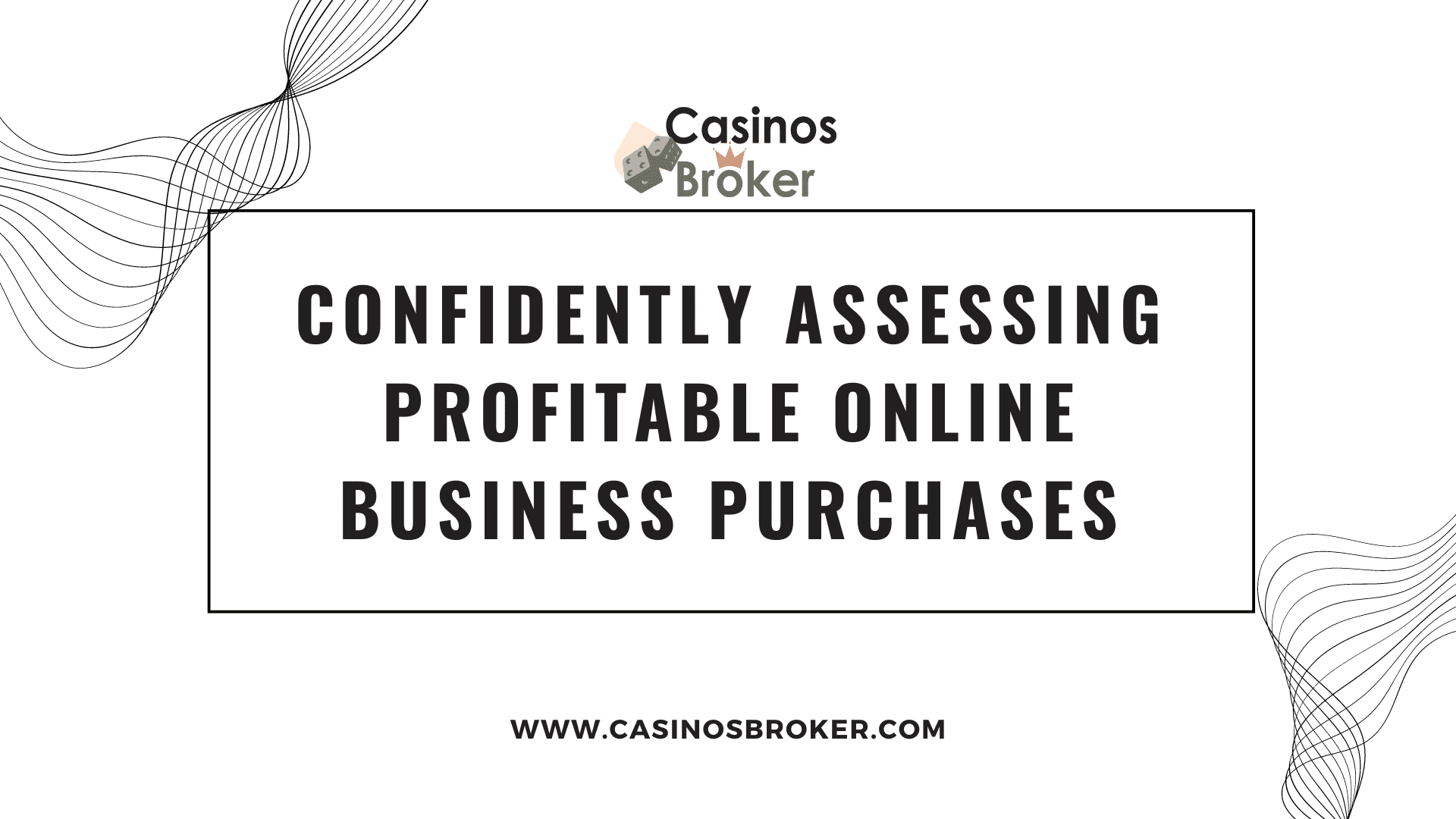Industry Considerations for Profitable iGaming Deals
- iGaming-Specific Valuation Dynamics: iGaming assets typically command premium multiples (4-6X EBITDA or higher) compared to general e-commerce due to regulatory barriers, license value, and customer LTV characteristics. The 24X-36X monthly earnings baseline may require adjustment for licensed operators vs. affiliate businesses
- Regulatory Complexity: iGaming M&A requires additional diligence layers around licensing jurisdictions, compliance infrastructure, and regulatory risk that aren’t captured in the original framework. A motivated seller could signal regulatory concerns or licensing issues
- Customer Acquisition Cost (CAC) and Retention Metrics: Time commitment assessment must account for player retention programs, responsible gambling obligations, and customer service requirements specific to regulated gaming operations
- Payment Processing and Banking Relationships: Growth opportunities in iGaming are often constrained by payment infrastructure and banking partnerships, which represent significant barriers to entry and expansion
- B2B vs. B2C Considerations: The iGaming ecosystem spans operators, platform providers, affiliates, and technology vendors—each with distinct valuation drivers, operational requirements, and growth profiles
- License Transferability: Seller motivation and timeline often correlate with license renewal cycles, regulatory changes, or jurisdictional market access issues that create deal urgency
- Proprietary Technology and Player Data: The “intellectual property” consideration becomes critical in iGaming, where platform technology, game content, algorithms, and player databases drive significant value
- Market Consolidation Trends: The fragmented nature of iGaming creates opportunities for roll-up strategies and synergistic acquisitions that warrant specific scoring consideration
A Systematic Framework for Evaluating Profitable iGaming Acquisition Opportunities
Introduction
The iGaming M&A marketplace presents both significant opportunity and complexity for strategic and financial buyers. With dozens of operators, platform providers, and affiliate businesses listed at any given time—spanning valuations from sub-3X to 8X+ EBITDA multiples—the challenge lies not in finding opportunities but in efficiently identifying those that align with your investment thesis while offering genuine value creation potential.
A disciplined evaluation framework serves as essential infrastructure for any serious acquirer in this space. Beyond reducing emotional bias, a systematic scoring methodology enables rapid triage of opportunities, consistent application of investment criteria, and confident decision-making when high-quality assets become available in competitive processes.
 The Core Evaluation Framework
The Core Evaluation Framework
Our methodology employs a three-point scoring system (-1, 0, +1) applied across critical deal attributes. This approach provides sufficient granularity for comparative analysis without introducing false precision that could obscure fundamental deal quality.
Scoring Logic:
- +1: The attribute represents a competitive advantage or favorable deal term
- 0: The attribute is neutral relative to your investment criteria
- -1: The attribute presents a challenge, premium pricing, or misalignment with objectives
Cumulative scores across all attributes create a ranking system that identifies which opportunities warrant deeper diligence and which should be passed on early in the process.
Critical Evaluation Attributes
1. Purchase Price Relative to Capital Availability
Structure your scoring around deployment capacity and portfolio strategy. For example, if targeting acquisitions in the €2-5M range:
- +1: €3M or below (preserves capital for operational improvements)
- 0: €3-5M (within target range)
- -1: Above €5M (requires capital restructuring or exceeds mandate)
Note that setting your negative threshold slightly above budget accommodates negotiation dynamics. Sellers frequently accept 10-15% below listing price, particularly in competitive processes where your speed and certainty of execution create value.
2. Valuation Multiple Analysis
iGaming valuations typically range from 3-6X EBITDA for established operators, though multiples vary significantly by business model (operator vs. affiliate vs. B2B), regulatory profile, and growth trajectory. Consider:
- +1: Below 3.5X EBITDA (potential value arbitrage)
- 0: 3.5-5X EBITDA (market range for established assets)
- -1: Above 5X EBITDA (requires exceptional growth or strategic rationale)
Premium multiples may be justified by licensed market access, proprietary technology, established payment infrastructure, or customer databases with demonstrated LTV. Don’t dismiss opportunities solely on multiple—assess the underlying value drivers.
3. Operating History and Business Maturity
Operational tenure provides visibility into seasonality, regulatory stability, customer retention patterns, and competitive resilience. In iGaming, a 3-5 year track record typically captures at least one regulatory change cycle:
- +1: 5+ years operating history (proven resilience)
- 0: 3-5 years (adequate track record)
- -1: Less than 3 years (higher execution risk)
Younger businesses may still represent attractive opportunities if they’ve captured first-mover advantage in newly regulated markets or demonstrate exceptional unit economics.
4. Management Time and Operational Complexity
Assess required time commitment in the context of your integration capabilities, existing portfolio synergies, and access to operational resources. For iGaming assets, consider not just administrative hours but also regulatory compliance obligations, customer service requirements, and payment monitoring:
- +1: Under 5 hours weekly (platform-based or fully systematized)
- 0: 5-15 hours weekly (standard operational oversight)
- -1: Above 15 hours weekly (requires dedicated management)
Factor in whether operations can be consolidated into existing infrastructure or require standalone management attention. Affiliate businesses typically require less operational intensity than licensed operator platforms.
5. Seller Motivation and Deal Dynamics
Understanding seller motivation directly impacts negotiation leverage, timeline expectations, and deal structure flexibility. In iGaming, common motivation drivers include:
High Motivation (+1):
- Regulatory compliance challenges or impending license renewal uncertainty
- Partnership dissolution or shareholder disputes
- Liquidity requirements (debt obligations, personal circumstances)
- Strategic exit from non-core geographies or business lines
Moderate Motivation (0):
- Portfolio rationalization or retirement planning
- Opportunistic exit without urgency
Low Motivation (-1):
- Testing market for premium valuation
- Minimal timeline pressure
Motivated sellers often accept structured consideration, earnouts, or seller financing that improves deal economics and risk allocation.
 6. Historical Performance Trends
6. Historical Performance Trends
Trailing performance directly influences valuation validation and near-term cash flow projections. Analyze trends over the most recent 12-18 months:
- +1: Consistent growth trajectory (revenue and EBITDA expansion)
- 0: Stable performance (flat to modest growth)
- -1: Declining performance (requires turnaround thesis)
In iGaming, distinguish between organic performance and results driven by regulatory changes, market access, or one-time events. A business declining due to new market entrants faces different risk than one impacted by temporary regulatory headwinds.
7. Near-Term Value Creation Opportunities
The optimal acquisition candidate offers clear, executable opportunities to enhance value within 3-6 months post-closing. This creates downside protection if market conditions shift and accelerates return on invested capital:
High Potential (+1):
- Untapped geographic markets with clear regulatory path
- Obvious product line extensions or payment method additions
- Integration synergies with existing portfolio (customer cross-sell, technology consolidation)
- Marketing optimization with proven channels
Moderate Potential (0):
- Growth opportunities requiring 6-12 months and moderate capital investment
- Market expansion requiring new licenses or partnerships
Limited Potential (-1):
- Growth requires significant capital investment, new capabilities, or extended timelines
- Highly optimized current operations with limited improvement vectors
In iGaming specifically, assess whether growth depends on regulatory approvals, new banking relationships, or technology development—each introducing execution risk and timeline uncertainty.
8. Strategic Alignment and Portfolio Fit
Beyond financial metrics, assess whether the asset aligns with your broader portfolio strategy, risk profile, and reputation considerations. This subjective factor becomes particularly relevant in regulated iGaming markets:
- Does the business operate in jurisdictions and verticals consistent with your compliance framework?
- Would ownership create reputational risk or stakeholder concerns?
- Does the asset complement existing holdings or require standalone management?
Apply a binary +1/-1 scoring to capture fundamental alignment or misalignment.
Additional Evaluation Dimensions
Depending on your investment mandate, consider incorporating additional attributes:
- Cash Flow Characteristics: EBITDA to free cash flow conversion, working capital dynamics
- Transaction Structure: Broker representation, seller financing availability, earnout provisions
- Intellectual Property: Platform ownership vs. licensing, proprietary algorithms, content rights
- Customer Database: Player demographics, retention rates, reactivation potential
- Regulatory Capital: License portfolio, compliance infrastructure, jurisdictional diversification
Implementation: The Iterative Scoring Process
Effective deal evaluation evolves through three distinct phases:
Phase 1: Initial Screening Upon identifying a potential opportunity, record preliminary scores based on available listing information. Assign neutral (0) scores to attributes lacking data to avoid artificial inflation or deflation of total score. Focus your outreach on the highest-scoring opportunities.
Phase 2: Prospectus Review Following NDA execution and Information Memorandum receipt, update scoring with detailed financial, operational, and market data. This phase typically reveals information that materially adjusts initial scoring—particularly around historical performance, customer concentration, and regulatory compliance.
Phase 3: Seller Discussions Management presentations and Q&A sessions provide qualitative insights that refine scoring: team capability, growth initiative execution probability, operational challenges, and negotiation flexibility. Adjust scores to reflect this enhanced understanding.
Decision Gates Establish minimum threshold scores for progressing to each subsequent phase. For example:
- Initial screening: Minimum +3 to request additional information
- Prospectus review: Minimum +5 to schedule management meetings
- Post-management meeting: Minimum +7 to submit LOI
These thresholds should align with your opportunity cost, diligence capacity, and market competitiveness.
Conclusion
A systematic evaluation framework transforms iGaming M&A from reactive opportunism to disciplined value creation. By consistently applying objective scoring criteria across opportunities, you efficiently allocate attention to the highest-probability targets while avoiding the cognitive biases that derail acquisition strategy.
The methodology presented here provides a foundation adaptable to your specific investment thesis, whether you’re building a multi-jurisdictional operator platform, consolidating affiliate businesses, or acquiring B2B technology assets. The key is consistent application and honest recalibration as new information emerges.
Remember: scoring is not static. Continuously update evaluations as diligence progresses, and don’t hesitate to exit opportunities that deteriorate below your threshold, regardless of sunk costs. The discipline to walk away from marginal deals preserves capital and attention for genuinely exceptional opportunities.
In competitive iGaming M&A processes, those equipped with clear evaluation frameworks and pre-approved investment criteria can move decisively when the right opportunity emerges—often the difference between winning a transaction and finishing as runner-up.
Frequently Asked Questions
Q1: How should I adjust the scoring framework for iGaming affiliate businesses versus licensed operators?
Affiliate businesses typically warrant different weighting on specific attributes. Time commitment scores can be more favorable (affiliates often require 5-10 hours weekly vs. 15+ for operators), while growth opportunity assessment should emphasize SEO sustainability, traffic source diversification, and regulatory risk to affiliate models. Licensed operators demand additional scoring consideration for regulatory capital, payment infrastructure, and compliance complexity. Consider creating parallel frameworks or adding iGaming-specific attributes like “License Portfolio Quality” or “Payment Infrastructure Maturity.”
Q2: What valuation multiples are realistic for different iGaming business models in current market conditions?
As of late 2024/early 2025, market multiples typically range from 3-4X EBITDA for pure affiliate businesses, 4-6X EBITDA for established licensed operators in competitive markets, and 6-8X+ for operators with defensible market positions, premium licenses (e.g., UK, regulated US states), or proprietary technology. B2B platform providers and technology vendors often command software multiples (4-7X revenue for established businesses). These ranges fluctuate based on growth rate, regulatory environment, customer concentration, and buyer competition. Always conduct comparable transaction analysis for your specific segment.
Q3: How do I assess “seller motivation” practically during early-stage discussions without appearing opportunistic?
Focus questions on timeline expectations, decision drivers, and future plans rather than directly probing for distress signals. Effective questions include: “What’s prompting you to consider an exit at this time?” “What timeline works best for your personal and business planning?” “Are there any external factors influencing your decision?” Pay attention to urgency cues—compressed timelines, willingness to provide extensive information quickly, or openness to creative deal structures often signal higher motivation. Broker-represented deals typically surface motivation context in preliminary materials.
Q4: Should I use different scoring thresholds for strategic acquisitions versus financial investments?
Yes, strategic acquisitions warrant adjusted frameworks. If acquiring for portfolio synergies, integration economics, or market consolidation, increase weighting on attributes like “Strategic Alignment,” “Customer Base Overlap,” and “Technology Compatibility” while potentially accepting higher multiples or operational complexity. Create a modified scoring system that explicitly values synergy potential (+1 for clear revenue or cost synergies, 0 for neutral, -1 for integration challenges). Financial investments should emphasize standalone cash flow, management capability, and near-term value creation opportunities with lower tolerance for operational complexity.
Q5: How frequently should I recalibrate my evaluation framework based on changing market conditions?
Review your scoring thresholds and attribute weights quarterly, or immediately following significant regulatory developments, market consolidation activity, or valuation trend shifts. For example, if new market regulations create license scarcity, increase the weight of “Regulatory Capital/License Portfolio” in your framework. If payment processing challenges intensify, elevate “Banking Relationships” as a scored attribute. The underlying methodology remains consistent, but thresholds and weights should reflect current market dynamics. Track your historical scoring accuracy—if you’re consistently declining opportunities that would have met objectives, your thresholds may be too restrictive.





